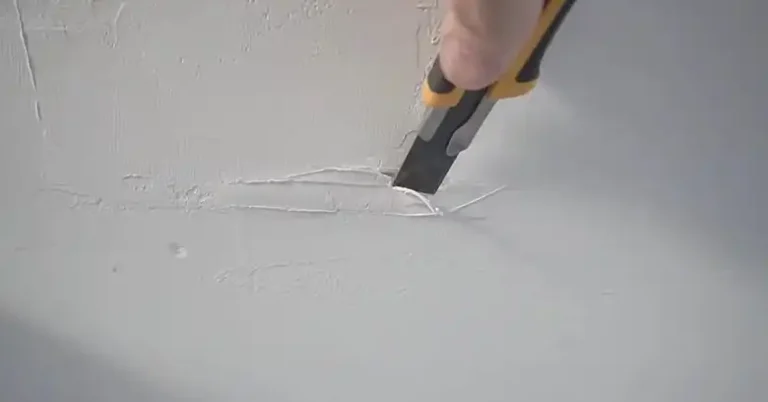The Best Way To Transport Prehung Doors Explained
Transporting prehung doors can be a challenging task for both DIY enthusiasts and professionals. These pre-assembled units, complete with frame and hardware, require careful handling to ensure they arrive at their destination undamaged and ready for installation.
While there are several methods to transport prehung doors, laying them flat is generally considered the best and safest option. This approach minimizes stress on the door’s hinges and frame, reducing the risk of warping or misalignment.
However, factors such as the type of door, vehicle space, and travel distance can influence the most suitable transportation method.
In this guide, we’ll explore the best practices for transporting prehung doors, with a focus on the flat-laying technique, while also covering alternative methods for specific situations.
By following these guidelines, you can ensure your new doors arrive in perfect condition, setting the stage for a smooth and successful installation.
Laying Prehung Doors Flat: The Recommended Transportation Method
Transporting prehung doors by laying them flat is often considered the safest and most effective method. This approach minimizes stress on the door’s hinges and frame, reducing the risk of damage during transit. Here’s why and how to do it:
Benefits of Flat Transportation
Laying doors flat ensures even distribution of weight, preventing undue pressure on the hinges and frame.
Flat transportation prevents warping or bending that can occur when doors are transported vertically.
A flat, secure load is less likely to shift during transit, protecting the door from knocks and bumps.
Step-by-Step Guide for Laying Doors Flat
Master the art of door installation effortlessly with our detailed step-by-step guide, ensuring perfect alignment and stability every time
Step 1: Prepare the Vehicle:
Ensure your vehicle has a flat, clean surface. If necessary, clear out any debris or items that could damage the door.
Step 2: Lay Down Protective Materials:
Place moving blankets or thick padding on the vehicle’s floor to cushion the door and prevent scratches.
Step 3: Position the Door:
Carefully lay the prehung door flat on top of the padding. Ensure it is centered to avoid overhanging edges that could catch on something during transit.
Step 4: Add Additional Padding:
Place moving blankets or foam between multiple doors if transporting more than one to prevent them from rubbing against each other.
Step 5: Secure the Load:
Use straps or tie-downs to secure the door in place. Make sure the straps are tight enough to prevent movement but not so tight that they damage the door.
Using Protective Materials
Protect your doors during transport with essential protective materials:
Moving Blankets
Thick moving blankets provide excellent cushioning and protection against scratches and dents.
2x4s
Placing 2x4s along the edges of the door can help distribute weight evenly and keep the door raised off the vehicle floor, adding an extra layer of protection.
Foam Sheets
Foam sheets can be used between doors or under the door for additional cushioning.
Vertical Transportation: When and How
While laying doors flat is generally preferred, there are situations where vertical transportation may be necessary. Here’s how to do it safely:
Situations Where Vertical Transport May Be Necessary
- Limited Vehicle Space: When vehicle space is insufficient to lay the door flat.
- Multiple Doors: Transporting several doors may require vertical stacking to optimize space.
- Short-Distance Moves: For short-distance moves, vertical transportation can be more convenient and space-efficient.
Proper Techniques for Vertical Transportation
- Choose the Right Vehicle: Select a vehicle with sufficient height and secure anchor points for upright transportation.
- Prepare the Surface: Place moving blankets or foam padding on the vehicle’s floor and walls to prevent scratches and damage.
- Position the Door: Stand the prehung door upright on its bottom edge. Ensure it is balanced and not leaning against anything that could cause damage.
- Use Padding: Place foam sheets or padding between the door and the vehicle wall, as well as between multiple doors if transporting more than one.
Securing Doors in an Upright Position
- Anchor Points: Use the vehicle’s anchor points to secure the door with straps or tie-downs.
- Straps and Tie-Downs: Place straps around the door at multiple points (top, middle, and bottom) to ensure it is held firmly in place. Avoid over-tightening to prevent warping.
- Prevent Shifting: Double-check that the door is secure and unable to shift during transit. Add additional padding if necessary to fill any gaps and provide extra stability.
Securing the Load
Ensuring that your prehung doors are properly secured during transport is crucial to prevent damage and ensure safe delivery. Here are some essential tips for securing your load:
Proper Use of Straps and Tie-Downs
Ensure secure transportation of doors with these essential tips:
- Choosing the Right Straps: Use high-quality, heavy-duty straps designed for securing large and heavy items. Ratchet straps are particularly effective for providing a tight, secure hold.
- Placement of Straps: Position straps at multiple points along the door, such as the top, middle, and bottom. This helps distribute pressure evenly and keeps the door from shifting.
- Tightening the Straps: Tighten the straps enough to hold the door securely in place without causing any damage. Avoid overtightening, which could warp the door or damage the frame.
- Double-Check Securement: After tightening the straps, give the door a gentle push to ensure it is immovable. Make any necessary adjustments to the straps if the door shows any sign of movement.
Preventing Shifting During Transit
Ensure stability throughout the journey with these preventive measures:
- Use of Additional Padding: Place extra padding around the door to fill any gaps and prevent movement. Foam sheets, moving blankets, or bubble wrap can be used to cushion the door and keep it in place.
- Check Vehicle Stability: Ensure that the vehicle’s floor is stable and free of debris that could cause the door to shift. A clean, even surface helps keep the door secure.
- Regular Stops: If transporting the door over a long distance, make periodic stops to check the securement and adjust the straps if necessary. This helps maintain stability throughout the journey.
Special Considerations
Transporting prehung doors with additional features, such as glass panels or sidelights, requires extra care. Additionally, protecting your doors from the elements during transport is crucial to maintaining their condition.
Transporting Doors with Glass Panels or Sidelights
- Extra Padding: Glass panels and sidelights are particularly vulnerable to damage. Use extra padding around these areas to provide additional protection. Foam sheets, bubble wrap, and moving blankets can help cushion the glass and prevent breakage.
- Separate Transport: If possible, transport doors with glass panels or sidelights separately from other items to minimize the risk of impact and damage.
- Labeling Fragile Areas: Clearly label any fragile areas on the door to remind yourself and anyone helping with the move to handle these sections with extra care.
Weather Protection During Transport
- Use of Tarps or Covers: Protect your prehung doors from rain, snow, and other weather conditions by covering them with waterproof tarps or heavy-duty plastic sheeting. Secure the covers tightly to prevent them from blowing off during transit.
- Sealed Vehicle: If available, use a sealed vehicle such as a van or enclosed trailer to provide the best protection against the elements.
- Planning for Weather: Check the weather forecast before your move and plan your transportation around any severe weather conditions. If bad weather is unavoidable, take extra precautions to protect the doors.
Loading and Unloading Safely
Loading and unloading prehung doors safely is essential to prevent damage and ensure a smooth transition from transport to installation. Here’s how to handle this critical phase with care:
Proper Lifting Techniques
- Bend Your Knees: When lifting a prehung door, always bend your knees and keep your back straight to avoid strain. Use your legs to lift the door, not your back.
- Team Lift: For heavier doors, enlist the help of others. Coordinate with your helpers to lift simultaneously, ensuring even weight distribution and minimizing the risk of dropping the door.
- Use Proper Grips: Grip the door firmly at its edges or solid parts to maintain control. Avoid grabbing delicate components like glass panels or decorative features.
Using Helpers or Moving Equipment
- Teamwork: Working with at least one helper can significantly ease the task of loading and unloading. Assign specific roles to ensure coordination and safety.
- Dollies or Carts: Utilize furniture dollies or carts with padded surfaces to transport doors over longer distances or uneven terrain. Secure the door on the dolly with straps or bungee cords to prevent slipping.
- Sliders: If moving the door across smooth surfaces, use sliders or furniture gliders to reduce friction and minimize the effort required to maneuver the door.
Common Mistakes to Avoid When Transporting Prehung Doors
Avoiding common pitfalls can safeguard your prehung doors and streamline the moving process. Here are key mistakes to steer clear of:
Overloading Vehicles
- Know Weight Limits: Exceeding the weight capacity of your vehicle risks damage to both the doors and the vehicle itself. Check the manufacturer’s guidelines and adhere to weight limits.
- Balance the Load: Distribute weight evenly within the vehicle to maintain stability and prevent overloading one side, which could affect steering and handling.
Insufficient Padding or Protection
- Use Adequate Padding: Insufficient padding exposes doors to scratches, dents, and other damage during transit. Layer moving blankets, foam sheets, or bubble wrap generously around each door.
- Secure Fragile Areas: Pay particular attention to fragile components like glass panels or decorative trim. Apply extra padding and use caution during handling.
Improper Securing Methods
- Effective Strapping: Improperly secured doors may shift or fall during transit, leading to damage. Use quality ratchet straps or tie-downs, ensuring they are tightened securely but not excessively to avoid warping.
- Regular Checks: Periodically inspect the straps during transit to ensure they remain tight, and the doors are secure. Make adjustments as needed to maintain stability.
Final Words
Transporting prehung doors requires careful planning and execution to protect them from damage and ensure they arrive in optimal condition for installation.
By following proper lifting techniques, utilizing helpers or equipment, and avoiding common mistakes like overloading and insufficient padding, you can ensure your doors arrive safely and ready to enhance your living space.
Whether you’re a DIY enthusiast or a professional contractor, prioritizing safe handling practices will contribute to a successful door installation and customer satisfaction.
FAQs
1. What Is The Advantage Of A Prehung Door?
The primary advantage of a prehung door is the ease and speed of installation. Since the door comes pre-mounted in its frame, it eliminates the need to fit the door into an existing frame, ensuring a perfect fit and alignment. This convenience is particularly beneficial for new constructions or major renovations.
2. How Should Doors Be Carried?
Doors should always be stored horizontally to prevent warping and damage, and they should never be placed directly on the floor or another hard surface. When carrying doors, support them evenly to avoid stress on any particular point, which could lead to cracks or deformations.
3. How Should Prehung Doors Be Stored?
Prehung doors should be stored vertically to maintain their integrity and prevent warping. Storing them horizontally can cause misalignment or damage to the door and frame, affecting their fit and function when installed. Ensure they are stored in a dry, stable environment to avoid moisture-related issues.
4. How Are Prehung Doors Shipped?
Prehung doors are typically shipped fully assembled, making transportation straightforward but requiring more space. For long-distance or freight shipments, they may be knocked down (disassembled) to reduce volume and shipping costs, although this requires reassembly upon arrival, which can be less convenient.
5. Is It Cheaper To Buy Prehung Doors?
Prehung doors tend to be slightly more expensive than slab doors due to their added convenience and the inclusion of the frame. However, the higher initial cost is often offset by the reduced installation time and labor, making them a cost-effective choice in many construction or renovation projects.






